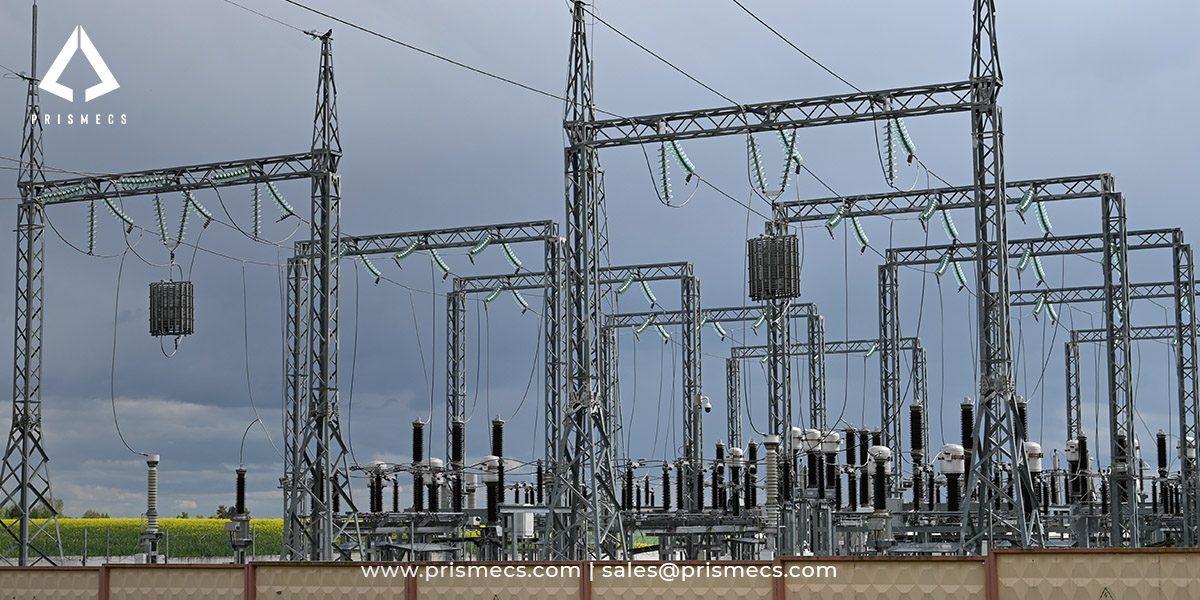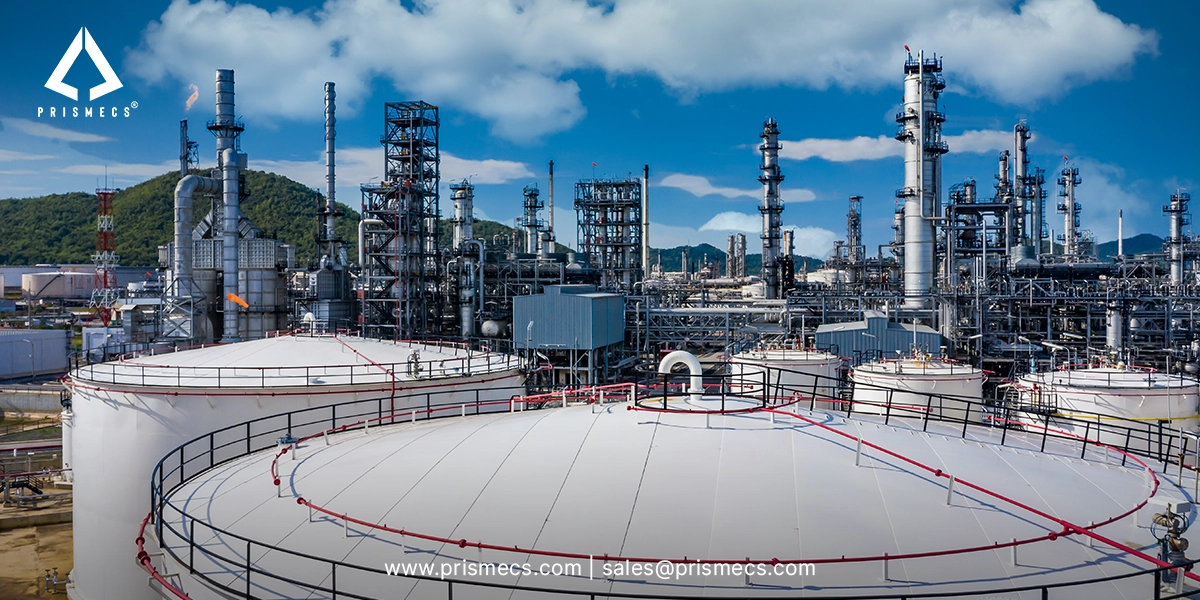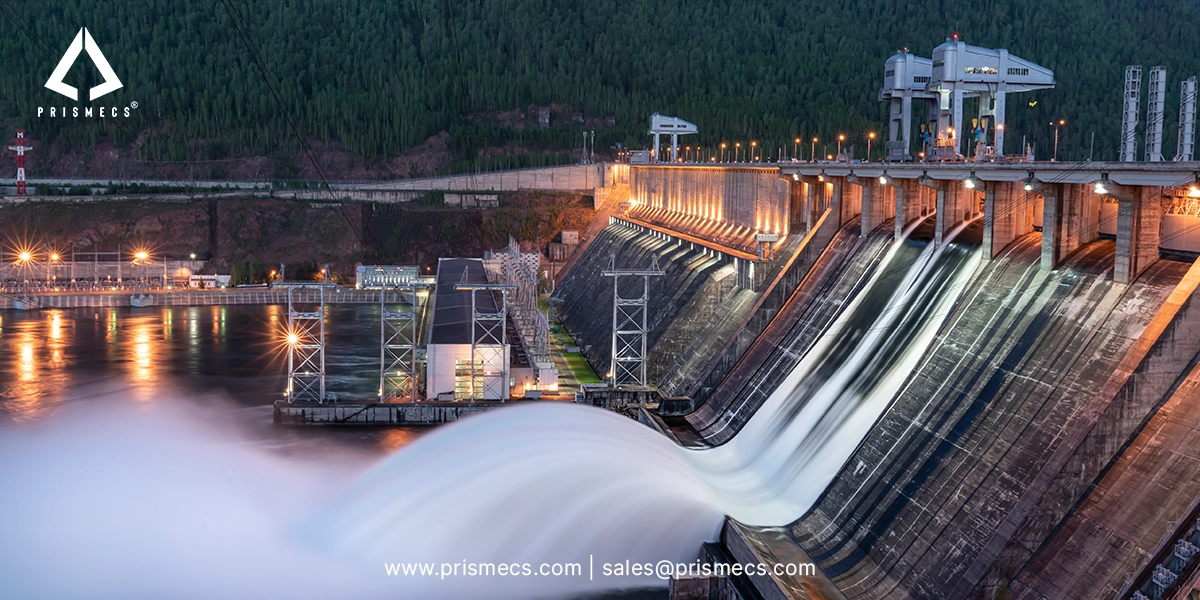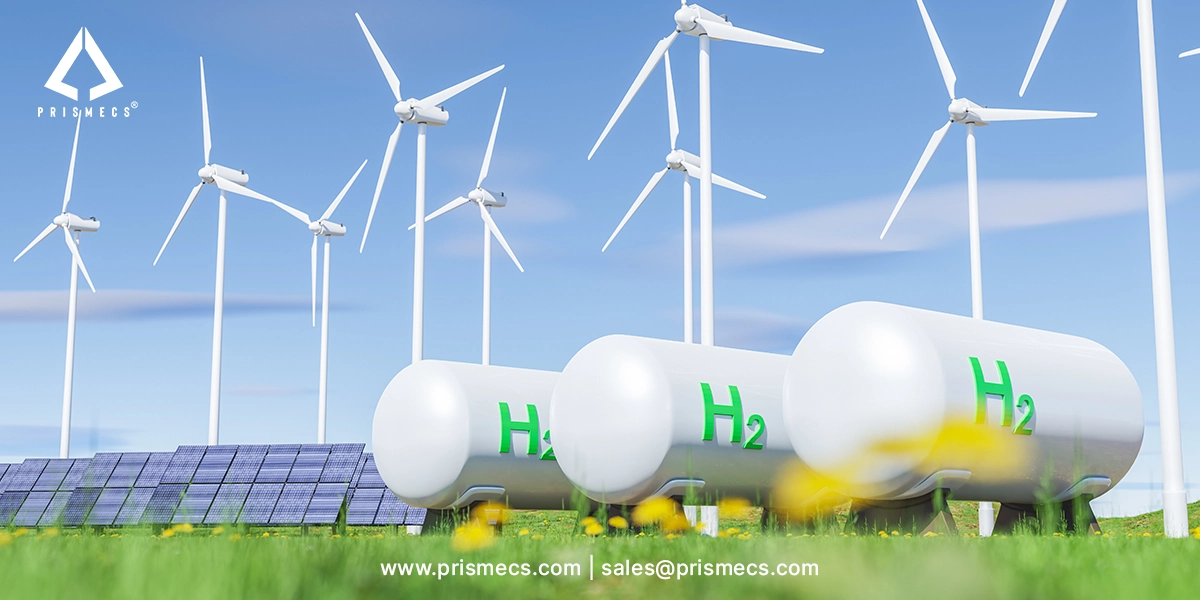
In power distribution, electrical substations play a key role in ensuring that electricity reaches different customers efficiently and safely. These modern substations play a vital role in electric power systems. They convert, control, and distribute electrical energy from one power source to another.
Substations house crucial equipment that manages electrical flow. They protect infrastructure and maintain operational safety. Substation protection equipment includes various incoming and outgoing circuits.
Substation Operation and Power Transmission
These circuits connect to the bus-bar system through isolators, circuit breakers, transformers, and other protection devices. When the system operates at higher voltage levels, these devices ensure smooth transmission of power. They minimize losses and enhance reliability across the transmission network.
Substation Safety
Given the complexity and expense of substation protection equipment, ensuring proper safety measures is essential to prevent catastrophic failures. Without adequate protection, key substation components, including transformers and power lines, are susceptible to damage. Protection measures include advanced quick-trip settings, arc-flash protection, and breaker reclose disablement. These measures safeguard personnel and equipment.
Energy Efficiency
Engineers now design modern substations to be more energy efficient and environmentally friendly. They use innovative monitoring systems and integrate renewable energy sources such as wind turbines. These renewable sources generate electrical energy and feed it into the transmission network. This process contributes to sustainable power generation.
Electric and Magnetic Fields
Furthermore, substations operate within strong electric fields and magnetic fields, which are inherent to high-voltage environments. Proper shielding, grounding, and insulation are therefore crucial to protect equipment and personnel from these invisible yet powerful forces.
Types of Substation Protection Equipment
Substations vary in voltage classes and are critical for integrating power from generating plants into the electrical grid. Here’s an overview of the different types of substations and their roles. Standard substation protection equipment seen in systems includes the following:
Transmission Substation
A step-up transmission substation collects electricity from a nearby generating station. It boosts the voltage for transmission to farther areas using a sizable power transformer. A transmission bus distributes electricity to one or more transmission lines.
Distribution Substation
An area distribution system receives power from the transmission system through a distribution substation. A distribution substation requires two or more transmission or sub-transmission lines as input.
Converter Substation
Typically, traction current and HVDC converter facilities connect to these substations. Converter substations contain powerful equipment that changes the current frequency of flow through the system. Depending on the situation, converter substations can switch between converting alternating current to direct current and vice versa.
What is Substation Protection Equipment?
The substation protection equipment consists of the following essential electrical equipment:
- Power transformer
- Instrument transformer
- Conductors & Insulators
- Isolator
- Bus bar
- Lightning arrester
- Circuit breaker
- Relays
- Capacitor banks
- Earthing
- Fencing
- Distribution panel board
1. Power Transformer
Power Transformers are static electrical devices that transfer power from one circuit to another without changing frequency. Typically, transformers step up or step down a system's voltage levels for transmission and generation. They reduce the voltage to 120,000 volts (120 kV), the sub-transmission level carried to local substations, from 735,000 volts (735 kV). Substation protection equipment has safety features called surge arresters on either side of it.
Instrument Transformers
The "erm "instrument transformers refer to devices that combine current and voltage transformers.
Current Transformer
The current transformer evaluates the system's higher currents by taking samples using a current transformer. These condensed samples accurately reflect the system's natural high currents. These employees install and maintain protection-related current relays, typically with low operating current ratings.
2. Potential Transformer
Like a current transformer, potential substation protection equipment samples high voltages from a system. It delivers low voltage to relays for a protection system and low-rating meters for voltage measurement. This low-voltage measurement comes from the AC system's high voltage. It reduces the expense of the measurement device.
3. Conductors & Insulators
An insulator is a material that restricts the free movement of electrons or electric charges. As a result, insulators have a high resistance to electricity. Insulators come in various forms, including suspension, strain, stray, shackle, pin, and more.
The image above illustrates several types of insulators. Insulators use insulation to prevent short circuits and to meet other insulation standards while building electric poles with conductors.
4. Isolator
An isolator is a manually operated mechanical switch. It isolates the damaged wire, circuit, or segment from the rest of the circuit. It prevents the emergence of more severe faults.
5. Bus bar
When there are heavy currents, a bus bar conductor is installed to link two or more pieces of equipment next to one another. These are typically bare copper bars that support the insulators and are either rectangular or tubular. The outdoor bus bars come in two different varieties: rigid and strain.
Technicians rigidly use pipes to link the various pieces of equipment. The bars' rigidity ensures that the clearances never change.
6. Lightning arrester
A distribution's most important safety feature is a lightning arrester. It protects people and costly equipment from lightning strikes. During lightning strikes, the system prevents excess electricity from accumulating and discharges it to the ground. These are put between a line and the earth close to the equipment.
7. Circuit breaker
A circuit breaker device automatically cuts off the system's power supply whenever a malfunction or short circuit develops. It minimizes damage at the fault site by quickly detecting and isolating faults. The circuit breakers stop the extremely high fault currents.
These currents may be ten or more times the currents used during regular operation. You can use a variety of criteria and applications to build circuit breakers. The most widely used circuit breakers include vacuum circuit breakers and air circuit breakers. SF6 circuit breakers and others are also common.
8. Relays
Relays are used to manually or automatically terminate the circuits. The coil that makes up the relay is exciting or energized. Closing its connection activates it to break or establish a circuit. Relays come in various forms.
These include voltage relays, auxiliary relays, and reclosing relays. They also include solid-state relays, directional relays, and inverse-time overcurrent relays. Microcontroller relays and overcurrent relays also come under these forms.
9. Capacitor bank
Because these capacitor banks serve as a source of reactive power, they can lessen the phase gap between voltage and current. They will boost the supply's capability for ripple current. It steers clear of the system's negative traits. A cost-effective solution exists to preserve power factors and correct power lag issues.
10. Earthing
Provide efficient, reliable, and durable Earthing in substations and switching stations. It ensures the safety of operational staff and electrical equipment. Voltage levels do not exceed acceptable limits, and a robust ground connection dissipates the fault to the earth. Earthing connects the electrical equipment to the earth's overall mass.
11. Fencing
Engineers fence the outdoor substation yard to prevent livestock and unauthorized individuals from entering. It needs to be independently earthed or grounded. Typically, the fencing height should be at least 1.8 meters. The appropriate paint coats the fencing every year.
12. Distribution panel board
The control room holds the distribution panel board. Connect the Earthing conductor to the panel frame and the earth grid. In front of the panel, a rubber pad of the required size and quality must be present.
Read More: All You Can Know About Substation Equipment
Ensuring the Reliability of Substations
Whether located near power plants or integrated into local grids, substations are designed to withstand extreme operating conditions. Properly maintained substation protection equipment is crucial for ensuring the smooth operation of electrical generation, transmission, and distribution. Investing in high-quality components and safety measures helps optimize system performance while protecting workers and assets.
Partner with Prismecs for Substation Solutions
Prismecs offers a wide range of substation protection equipment designed for optimal performance and safety. Whether you need equipment for power plants, substations, or distribution networks, our experts can help. Contact us at +1 (888) 774-7632 or sales@prismecs.com for more information.
Frequently Asked Questions about Data Centers
Q1. What are the safety precautions in the substation?
Ans: Maintain clear communication and use proper signage in substations. Adhere to lockout/tagout procedures and wear appropriate personal protective equipment (PPE). Maintain safe distances from live equipment and ensure proper grounding to prevent electrical hazards. Regular training and adherence to safety protocols are crucial to avoid accidents and injuries.
Q2. What is the substation?
Ans: A substation is a facility in the electrical transmission and distribution system. It transforms voltage from high to low or the reverse using transformers. It includes equipment that controls the flow of electrical power, such as circuit breakers, switches, and transformers. It serves as a point for system protection and monitoring.
Q3. What PPE do workers use in the substation?
Ans: A substation is a facility in the electrical transmission and distribution system. It transforms voltage from high to low or the reverse using transformers. It includes equipment that controls the flow of electrical power, such as circuit breakers, switches, and transformers. It serves as a point for system protection and monitoring.
Q4. What are the basic principles of a substation?
Ans: The basic principles of a substation transform voltage levels for efficient power transmission and distribution. Circuit breakers and relays protect the electrical system. Operators ensure the reliability and stability of the power supply by managing power flow and system faults.
Q5. What are the three main parts of a substation?
Ans: The three main parts of a substation are:
Power Transformers: Convert voltage levels between high transmission voltages and lower distribution voltages.
Switchgear: Includes circuit breakers and disconnect switches that protect and control electrical circuits.
Control Systems: Comprise protective relays, control panels, and monitoring equipment that ensure safe and efficient operation of the substation.
Tags: Substation Protection Substation Protection Equipment Electrical Substations Power Outages Protection Relays Power Transformer Instrument Transformer Conductors & Insulators Isolator Bus Bar Lightning Arrester Circuit Breaker
recent posts

Petrochemicals
6 minutes read
Petrochemical EPC Services for Complex Plant Projects
Complete complex petrochemical projects with expert EPC services. Prismecs ensures safety, compliance, and on-time delivery. Partner with us today.

Renewables
5 minutes read
How Renewable Energy Systems Work Efficiently
Maximize efficiency with Prismecs’ renewable energy systems. Scalable, reliable solutions help industries cut costs, reduce emissions, and achieve sus...

I and C Services
7 minutes read
Expert Commissioning Services for Safe, Efficient Operations
Ensure safe, efficient energy operations with Prismecs commissioning services. Optimize energy systems, improve reliability, and reduce operational ri...

Green Hydrogen
7 minutes read
Green Hydrogen Plant Technology Guide
Discover how green hydrogen plants deliver zero-carbon energy. Prismecs guides scalable production, storage, and renewable integration. Act now for cl...